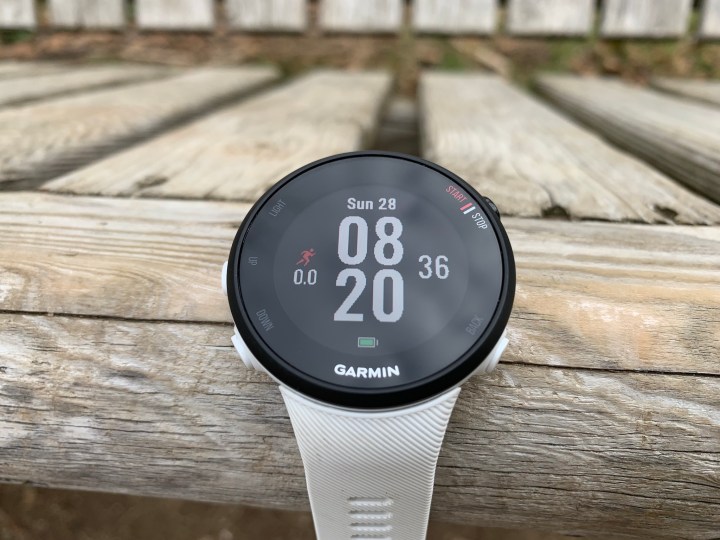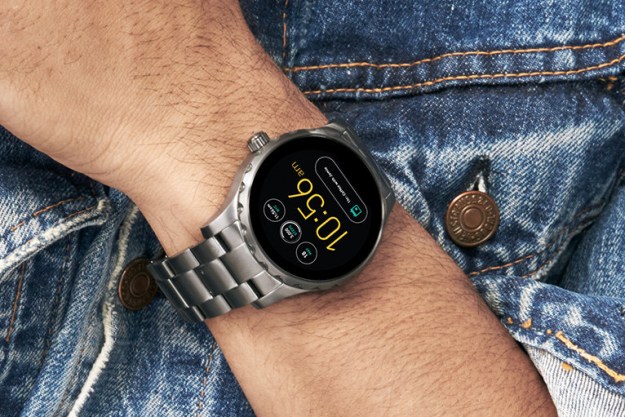
Garmin refreshed its Forerunner lineup upgrading three of its existing running-focused smartwatches and adding two new models. One of the more aesthetically-pleasing upgrades is the Forerunner 45, an entry-level running watch that replaces the now three-year-old Forerunner 35. We break down what is new in the Forerunner 45 and help you decide if this running watch should be your next training partner.
What’s New
On the outside, the Forerunner 45 is markedly different than the Forerunner 35. Say goodbye to the boxy design of the 35 model and hello to the new 45 with its circular watch face. Not only is it modern-looking, but it also has the always-on, sunlight-readable display and five navigation buttons that you’ll find on Garmin’s other Forerunner watches. The Forerunner 45 finally looks and acts like one of the Forerunner watches. It’s also available in two sizes — the 42mm Forerunner 45 and the 39mm Forerunner 45S.

Feature-wise, Garmin has turned the Forerunner 45 into a well-rounded running watch that handles everyday health as well as tracking your running, yoga, cycling and more. The watch now supports all-day stress monitoring and Garmin’s new body battery metric which tracks your daily stress, activity level, and relaxation. Garmin Coach is another new addition to the Forerunner 45 and provides adaptable, coach-driven training plans for a 5K, 10K or half-marathon.
First available in the Vivoactive 3 Music (Verizon), the Forerunner 45 also has two new safety features: Incident Detection and Assistance. Incident detection uses sensors to detect when there has been an accident and sends a message with your current location to pre-selected emergency contacts. Assistance is a safety feature for when you are in an unsettling situation and need to send a message discreetly to your emergency contacts. Both of these features require a connected phone. Similar to the other Forerunner watches, the Forerunner 45 is configurable so you can change the settings for a workout, connect to sensors like a heart rate monitor, and even change the watch face.
What has stayed the same
The Forerunner 45 has a new look and a few new features but the watch still targets the same type of runner as the Forerunner 35. It is an entry-level fitness watch with GPS tracking that provides basic metrics like pace, distance, elevation (estimated), heart rate, and cadence. There’s no pulse oximeter, barometric altimeter or Garmin Pay.
Who should buy the Forerunner 45
The Forerunner 45 is best suited for the casual runner who wants to dabble in fitness tracking but doesn’t want to obsess over numbers.
Should you upgrade?
If you own the Forerunner 35, there is no need to upgrade to the Forerunner 45. We love the look of the Forerunner 45 and the new features, like Garmin Coach, are useful, but the updated version doesn’t offer any significant performance upgrades over the previous version.




